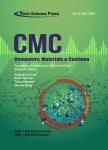Subspace Clustering in High-Dimensional Data Streams:A Systematic Literature Review
作者机构:Department of Computer and Information SciencesUniversiti Teknologi PETRONASSeri Iskandar32610PerakMalaysia Centre for Research in Data Science(CeRDAS)Universiti Teknologi PETRONASSeri Iskandar32610PerakMalaysia
出 版 物:《Computers, Materials & Continua》 (计算机、材料和连续体(英文))
年 卷 期:2023年第75卷第5期
页 面:4649-4668页
核心收录:
学科分类:08[工学] 0714[理学-统计学(可授理学、经济学学位)] 0701[理学-数学] 0812[工学-计算机科学与技术(可授工学、理学学位)]
主 题:Clustering subspace clustering projected clustering data stream stream clustering high dimensionality evolving data stream concept drift
摘 要:Clustering high dimensional data is challenging as data dimensionality increases the distance between data points,resulting in sparse regions that degrade clustering *** clustering is a common approach for processing high-dimensional data by finding relevant features for each cluster in the data *** clustering methods extend traditional clustering to account for the constraints imposed by data *** streams are not only high-dimensional,but also unbounded and *** necessitates the development of subspace clustering algorithms that can handle high dimensionality and adapt to the unique characteristics of data *** many articles have contributed to the literature review on data stream clustering,there is currently no specific review on subspace clustering algorithms in high-dimensional data ***,this article aims to systematically review the existing literature on subspace clustering of data streams in high-dimensional streaming *** review follows a systematic methodological approach and includes 18 articles for the final *** analysis focused on two research questions related to the general clustering process and dealing with the unbounded and evolving characteristics of data *** main findings relate to six elements:clustering process,cluster search,subspace search,synopsis structure,cluster maintenance,and evaluation *** algorithms use a two-phase clustering approach consisting of an initialization stage,a refinement stage,a cluster maintenance stage,and a final clustering *** density-based top-down subspace clustering approach is more widely used than the others because it is able to distinguish true clusters and outliers using projected *** algorithms implicitly adapt to the evolving nature of the data stream by using a time fading function that is sensitive to *** work can focus on the clustering framework,parameter optimiza



